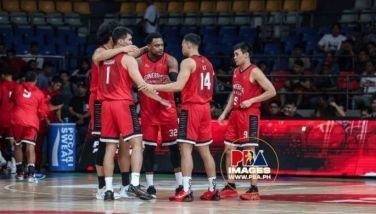Running Longer and Faster
MANILA, Philippines -- Road running and racing is a classic sport, science, and art wherein any animal with legs could perform - but would also need decent brains, attitude, and discipline to improve and perform well.
Running involves a combination of aerobic (oxygen-powered) and anaerobic (absence of oxygen) activities. Our running muscles have two types of fibers, the “Slow-Twitch” and the “Fast-Twitch”, which are randomly mixed depending on our genes. Fast-Twitch muscles are generally more powerful (and bulky) but they fatigue more easily, whereas the Slow-Twitch muscles are relatively weaker but are virtually tireless and efficient in consuming oxygen (aerobic). Marathoners (42 Kms) and ultra-marathoners (more than 42 Kms) have dominant slow-twitch muscles, which explain their awesome endurance to run long distances. Meanwhile, sprinters running 100 meters up to 400 meters have a lot of powerful fast-twitch muscles fibers. Elite runners from 800 meters up to the marathon (42 k) have different combinations of these fibers. The longer the distance a runner excels, generally the more dominant the slow-twitch muscle fibers are.
Road races are mostly long distance events ranging from the 5 Kms up to 42 Kms, and sometimes even 100 Kms (Ultra-Marathons). Newbie road-runners need to condition their bodies to run the distance. They’re encouraged to run slowly at “conversational pace”, where it should be easy to talk with someone. Slow running recruits slow-twitch muscles that have more endurance and more efficient in utilizing oxygen - breathing is easier because oxygen molecules are efficiently absorbed by the running muscles. When exercised regularly and workload volume is gradually increased, slow-twitch muscles become more efficient and stronger, enabling longer and faster running.
Most beginner running programs recommend slow-running at least 3 times a week for at least 20 minute per session. Walk-breaks are also encouraged. Intermediate programs would have gradual increase in distances to increase endurance, usually for a specific race distance. Finally, advanced programs would also include “speed-work” to recruit additional “fast-twitch” muscles, and to train the body to adapt to more intense workload.
Because of this “training-effect”, visible improvements in running can be motivating; opportunities are challenging and; racing times rewarding. Like the best things in life - the more you give, the more you get.
Editor’s Note: Nathaniel Garcia is a runner and engineer in ON Semiconductor Philippines Inc. His day job as a Test Engineer is to optimize production testing of semiconductor devices. Every morning he runs, trains, and tries to learn smart ways to improve. Then every month or so, he tests the limits of his endurance, speed, and stamina by joining local races ranging from 5Kms to 42.2Kms. Please visit his blogs about running, training, and racing at http://i2runner.com.
adidas King of the Road (5k, 10k, 21k) is scheduled on October 25, 2009, at Fort Bonifacio in Taguig City. Registration is available at Php 500 at adidas stores. For more information, log on to the adidas official Facebook and e-group accounts, adidas Running Philippines for Facebook and http://sports.groups.yahoo.com/group/adidas_kingoftheroad_2k9/ for the e-group.
- Latest
- Trending






























